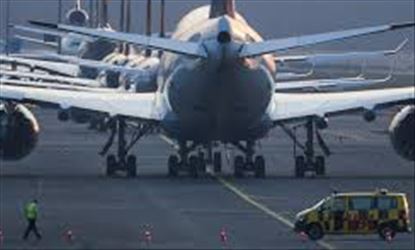
Reportedly post coronavirus turbulence, the aviation industry across the world will see a drastic change in the way industry works. With several government-imposed restrictions and other precautions, the industry will see drastic operational changes. The biggest challenge will be to maintain social distance starting from the queue at the entry gate where CISF checks the ID cards, to line where check-in baggage is collected. Everywhere, if 3-4 feet distance is maintained, time to check-in will be extended. Passengers might have to reach the airport around three to four hours before scheduled departure.
DGCA has asked the airlines to not occupy the middle seats and only fill aisle and window-side seats. If an aircraft is a 180 seater, after leaving the middle seat vacant it can carry only 105-110 passengers. This will hit the revenue model of most airlines. The government most likely will allow airlines to operate post the lockdown, but they will strictly have to adhere to social distancing norms.
There are plans for full-service airlines placing their food packets on respective seats before passengers board the plane. The packets will be kept behind the seat, in the pocket. The process of boarding the plane will also see changes. Currently, 10 rows are boarded simultaneously. Post the lockdown, there is a chance that only two to three rows will be allowed to board at the same time. Screening of passengers before departure and after arrival is likely to continue. A cabin crew in a leading airline said, "I don't know how many will lose jobs post-lockdown, but the ones working will also have apprehensions about safety. Many passengers who used the same aircraft and airports have tested positive." If the normal boarding procedure for a one hour flight earlier took 45 minutes, post the lockdown it might take 5-6 hours from start to end of the journey.




